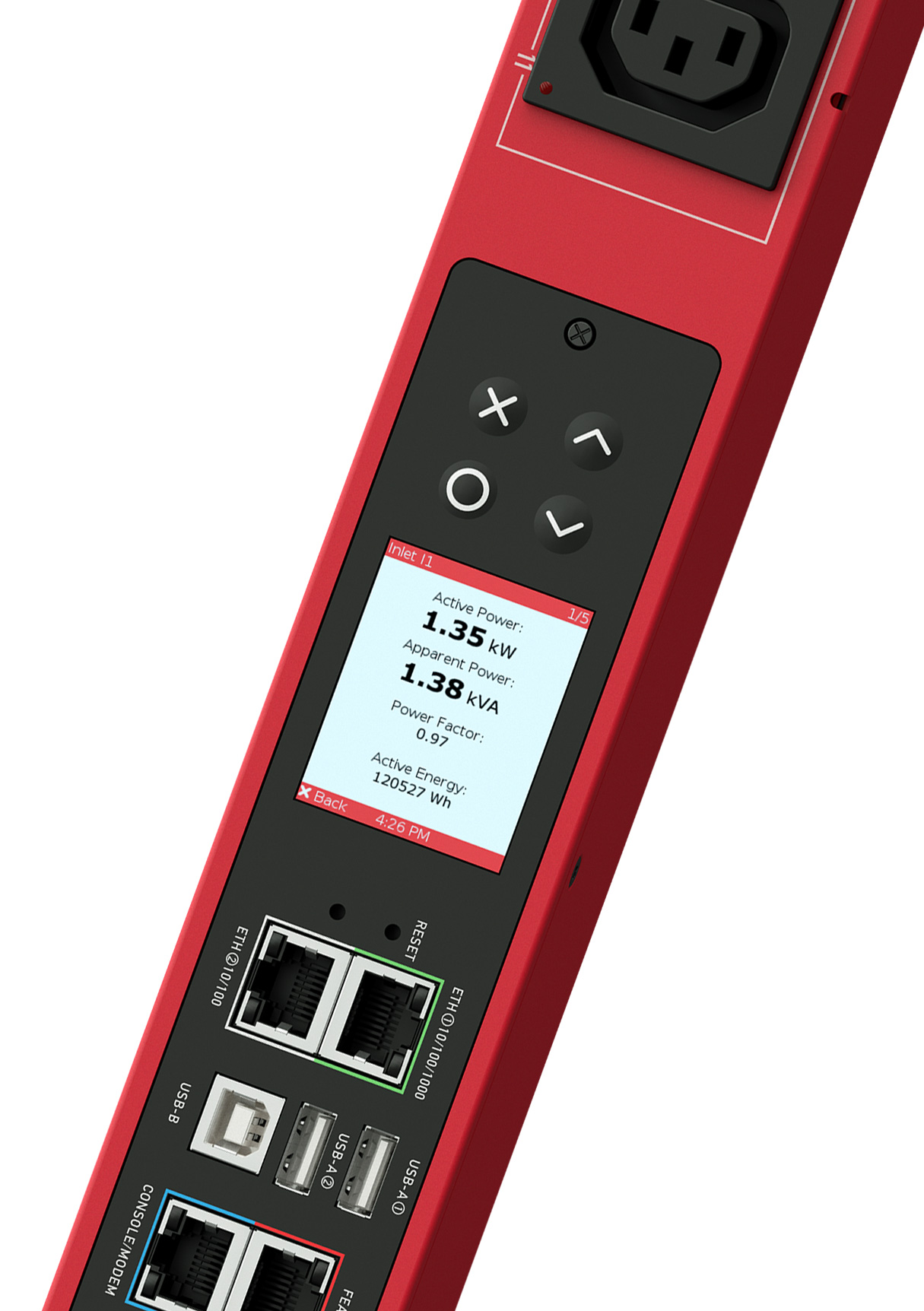
Home » Resources » Case Studies » Accounting Firm
Global Accounting Firm Adds Intelligent Tools To Manage New High-Density Colocation Site
Overview
Recognized by the U.S. Environmental Protection Agency and other energy organizations for reducing its carbon footprint, the accounting firm looks to all parts of its business to support its energy-reduction efforts — including its data centers.
Its traditional data center, which supports all applications used by the firm’s professionals in the United States generates almost half of its electricity on-site using a low-emission, natural-gas power generation system. Instead of venting into the environment, the generator’s exhaust heat is distributed to chillers — providing continuously chilled water to the air conditioning system that maintains optimal temperatures for the IT equipment. Solar power is even used to provide electricity to the firm’s headquarters campus which houses the data center and company offices.
Energy efficiency steps inside the data center include virtualizing servers, and eliminating hotspots, over cooling and other energy inefficiencies. The firm also uses perforated tiles and blanking panels to prevent hot air from creeping into cabinets or flowing into cold aisles.
With business growing — and the completion recently of several company acquisitions — the firm decided to expand its data center operations to a Tier III colo facility. The data center team took the opportunity to examine its cabinet configurations and power distribution strategy to introduce new efficiency tools to both data centers.
Challenges
The accounting firm’s new colo site serves dual roles — both production and disaster recovery. Critical applications from the legacy data center will be replicated in the colo site. The goal over time is to have equal production in both data centers.
In the same timeframe as the move to the colo data center, the firm migrated towards blade servers and virtualization — reducing the compute per square footage of its physical real estate while increasing the power density of its data centers. Higher voltage power configurations were required in the denser-configured cabinets filled with blade computers. Older low-density 2 to 4 kW cabinets were replaced with 6 to 8 kW cabinets filled with blade servers tightly packed in each cabinet. The move to virtualization freed up substantial cabinet space in the data center at headquarters, but power capacity constraints were a concern.
There was adequate floor space and power capacity for future expansions in the new colo — almost a megawatt of power for the 5,000-square-foot space. However, managing power consumption and cooling was a concern at the new site. Another challenge was determining power distribution and capacity to support the different cabinet configurations deployed at the colo site.
Designed to streamline and speed infrastructure deployments, the firm created standard cabinet configurations for different applications. One cabinet configuration, for example, consists of a Cisco UCS chassis, primary flash storage and backup storage. Another cabinet configuration could have three to six UCS chassis with primary flash storage and backup storage.
The firm also wanted complete visibility of its power chain and data center environment for planning purposes and to proactively eliminate potential problems.
Solution — Intelligent Power Chain & Metering
The firm was looking for power distribution and monitoring solutions for its new colo data center.

Historically the firm had opted for basic power distribution units at the rack and a branch circuit monitoring solution to measure power up to the remote power panel. But the existing solution didn't provide details on energy usage and capacity — such as where they may be oversubscribed.
The firm wanted finer metering granularity of power downstream for the new colo site — at the cabinet and device level. The firm’s IT team conducted a bakeoff of different vendors’ rack PDU products. The Raritan PX rack PDU was selected to provide accurate outlet-level power information and for the smart temperature and humidity sensors that plug into the PDU.
The firm purchased Raritan 1000-series 50 amp 3-phase intelligent rack PDUs. With three-phase power distribution directly to the rack the firm could double rack density without doubling the cost. Three-phase PDUs are also more energy-efficient as they eliminate energy losses with each voltage step down.
The real-time information gathered from the Raritan PDUs was analyzed by DCIM Monitoring Software. In addition to monitoring power capacity and energy consumption, the DCIM provided the firm with data center health maps, power analytics, cooling charts, and alerts of potential trouble.
“The ability to be able to visualize and see what your infrastructure is doing helps when somebody says, ‘Hey, we’re going to deploy 12 more cabinets in the colo site. Can you handle it?’ You can do a quick ‘what if’ analysis using accurate information — instead of nameplate information from server manufacturers — to make decisions on our infrastructure, says the accounting firm’s director of data center operations.
“Nameplate information may be fine in some circumstances. But if you go with a full-width blade, a large number of cores, and a lot of memory, you’re going to start pulling power. You will want to know what is happening under the load. So, outlet-level metering tools are very helpful,” he added.
Benchmarking
Power drawn from cabinet cells varies, even among the same cell configurations. “There are so many variables, including what applications are running, what CPU is being used,” says the director. “Having the information collected sent to our DCIM is very useful because we can say with some certainty that these HP storage arrays regularly are consuming three kW, not one as we originally had thought.”
Insights gleaned from the DCIM on the various cabinet configurations in the new colo site are also helping the legacy data center. “If we put six UCSs in one cabinet in the colo and the cabinet consumes X-amount of kW, we can use the data point to help with deployments at headquarters,” adds the director.
“We generate weekly reports on power consumption and track where we are on that power curve. For the first time in many years, we’ve seen power consumption go down,” says the director. “The results are from the combination of using more efficient computers, efficient power distribution, and real-time monitoring that keeps us informed on when there may be issues and how to improve efficiencies.”
The colo data center was also outfitted with sensors to manage airflow, temperature, and humidity to safeguard IT equipment. Temperature sensors were placed to measure the return air temperature coming into the tops of the cabinets. By monitoring temperature near CRAC units, the sensors showed that the firm didn’t have to run all the CRACs — saving cooling costs. The sensors also help the firm to eliminate hotspots.
As more applications are deployed in the colo, the firm’s IT team keeps an eye on infrastructure constraints — such as sufficient switch port capacity, network connections to support a new cell, and backup connections. To conserve ports and IP addresses — and reduce costs, the IT team uses the cascading features of Raritan PDUs. Eight PDUs are cascaded using one single IP address.
The firm uses a number of the reports generated by DCIM, including the power capacity in cabinets. “We can easily see what needs our attention — yellow needs attention, red means reaching a critical threshold. We also use the reports with management to demonstrate why we should update a cabinet from 30 amps to 50 amps,” says the director.
KVM and Serial Access over IP
A long-time Raritan KVM user, the firm started over a decade ago to use Raritan KVM switches for out-of-band access to servers. Over time, at the headquarters data center, they migrated from analog switches to Raritan digital KVM-over-IP switches.
The new colo data center has added Raritan’s Dominion KX III KVM-over-IP switches and Dominion SX serial solutions to remotely access and manage IT equipment.
In turn, all the IT equipment connected to Dominion KX and SX solutions at both data centers are controlled through a single portal using the Raritan CommandCenter Secure Gateway. It provides logical views of the entire enterprise, and BIOS-level access to all servers via a browser. Through a single sign-on to a single IP address, the accounting firm has real-time views of all physical and virtual servers in the headquarters and colo data centers.
Summary
“We now have a complete monitoring platform to manage our distributed data centers. Raritan solutions help us visualize our data center infrastructure so that we can manage and meet the demands of our business. We can deliver reliability by understanding our power capacity at any given time no matter what the computing configuration. It’s like having a gas gauge in a car. There’s no excuse for running out of gas. We have visibility in real-time to power usage and infrastructure performance.”
Learn More About Raritan

Customer
A large accounting firm providing audit, tax, and advisory services.
Challenges
- Support the company’s fast growth while meeting environmental goals.
- Transfer production workload to a new colocation (colo) site that serves as a Disaster Recovery site.
- Power distribution to cabinets with high densities and high power up to 10 kW.
- Visibility into the entire enterprise infrastructure — both the legacy data center and a new colo.
Solution
- Raritan PX 1000-series intelligent rack PDUs; 50-amp PDUs to support higher densities.
- DCIM energy management software.
- All-in-one temperature and humidity sensors.
- Raritan Dominion® KVM-over-IP and Serial-over-IP access to equipment using a central CommandCenter® Secure Gateway.
Benefits
- Visibility in real-time into power usage and infrastructure performance.
- Reliable power chain for different cabinet configurations.
- Reduced electricity usage and carbon footprint.
- Prepared for the unexpected with monitoring and secure remote access tools.
